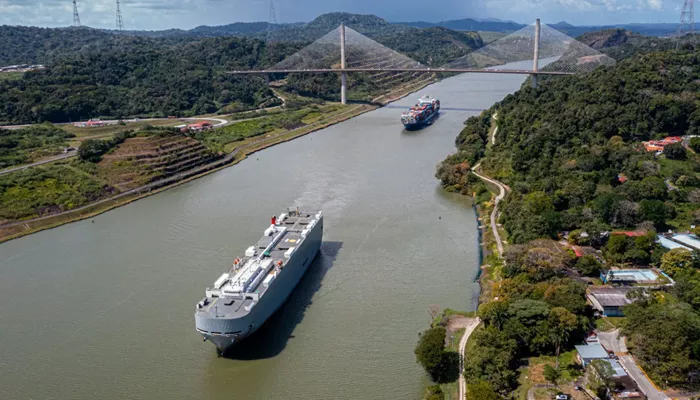The Panama Canal, a monumental engineering achievement that has been a symbol of both progress and geopolitical maneuvering, is once again at the center of tensions between the United States and Panama. Over a century after its completion and 25 years following its return to Panama by the US, President Donald Trump’s recent remarks have reignited fears of US interference in the canal’s operations.
In his inaugural address, Trump voiced plans to reclaim control over the canal, calling the transfer to Panama a “foolish gift” and claiming that Panama overcharges the US Navy for passage. “We have been treated very badly from this foolish gift that should have never been made,” Trump said, adding that Panama had “broken its promise” by charging excessive transit fees. Furthermore, Trump repeatedly alleged that China had significant influence over the canal, a claim for which he provided no evidence, further stirring concerns.
Panamanian officials have firmly rejected Trump’s accusations, asserting that the country’s management of the canal is both fair and transparent. However, such statements are not taken lightly in Panama, where the canal is integral to national identity and economic prosperity. In 2024, the canal generated nearly $5 billion in profits, and a study by IDB Invest revealed that the waterway accounts for 23.6% of Panama’s annual income, directly influencing the nation’s economic stability.
Despite official denials, the specter of US military intervention lingers. Panama, a country without a standing army, has experienced several US military actions over the years, including the 1989 invasion that led to the ousting of its leader, Manuel Noriega. Ovidio Diaz-Espino, a Panamanian author, voiced concerns that Trump’s rhetoric could lead to more aggressive action, saying, “All he [Trump] needs is to land ten thousand troops and that’s it.”
A History of US Intervention and Canal Construction
The origins of US involvement in Panama date back to the early 20th century when the region was part of Colombia. Panamanians, feeling neglected by the distant Colombian government, pushed for independence, a movement that gained traction among those advocating for the construction of a trans-oceanic canal. The narrow isthmus was seen as the ideal location to link the Atlantic and Pacific Oceans, dramatically reducing travel time for ships and avoiding the perilous route around South America’s Cape Horn.
The French attempt to build the canal in the 1880s ended in failure, with widespread deaths from disease and financial mismanagement. However, in 1903, the US, under President Theodore Roosevelt, took a more aggressive approach, sending gunboats to support Panama’s independence from Colombia. This led to the creation of the Republic of Panama and, soon after, a treaty that granted the US control over the canal zone.
The treaty, negotiated by Philippe-Jean Bunau-Varilla, a French engineer representing Panama, was controversial from the start. While it ensured Panama’s sovereignty, it also gave the US unrestricted use of the canal. Many Panamanians felt betrayed, especially given that Bunau-Varilla had significant financial interests tied to the canal project. Still, Panama’s reliance on the US for protection against Colombia left them with little choice.
The US Army Corps of Engineers imported workers from the Caribbean to construct the canal, overcoming a series of engineering and health challenges. The canal’s completion in 1914, marked by the final explosion that flooded the canal, was hailed as one of the greatest engineering feats of its time. President Woodrow Wilson’s telegraph in 1913, signaling the completion of the canal, was immortalized in the press as a historic moment: “Canal is opened by Wilson’s finger,” declared the New York Times the following day.
Ongoing Tensions and Future Uncertainty
Trump’s recent statements echo the complex and contentious history of US involvement in Panama and the canal. While Panama remains fiercely protective of its sovereignty over the waterway, Trump’s rhetoric has raised concerns about potential US actions to undermine Panama’s control. The canal remains not only a vital economic asset but also a symbol of the delicate balance of power between the two nations.
As Panama continues to rely on the canal’s revenues to sustain its economy, the potential for renewed US intervention, whether political or military, looms large. With historical precedents of US influence, Panamanians are wary of the consequences that Trump’s words may bring, and many are working to protect the canal from becoming the next flashpoint in a geopolitically charged region.
Related topics:
- India Surpasses China in Gold Purchases, Buying 51% More in Three Months
- Gold Rates Skyrocket in Chennai on Diwali, 24K Gold Exceeds Rs. 81,000 Per 10 Grams
- Gold and Silver Prices Rise Across India on January 13, 2025


